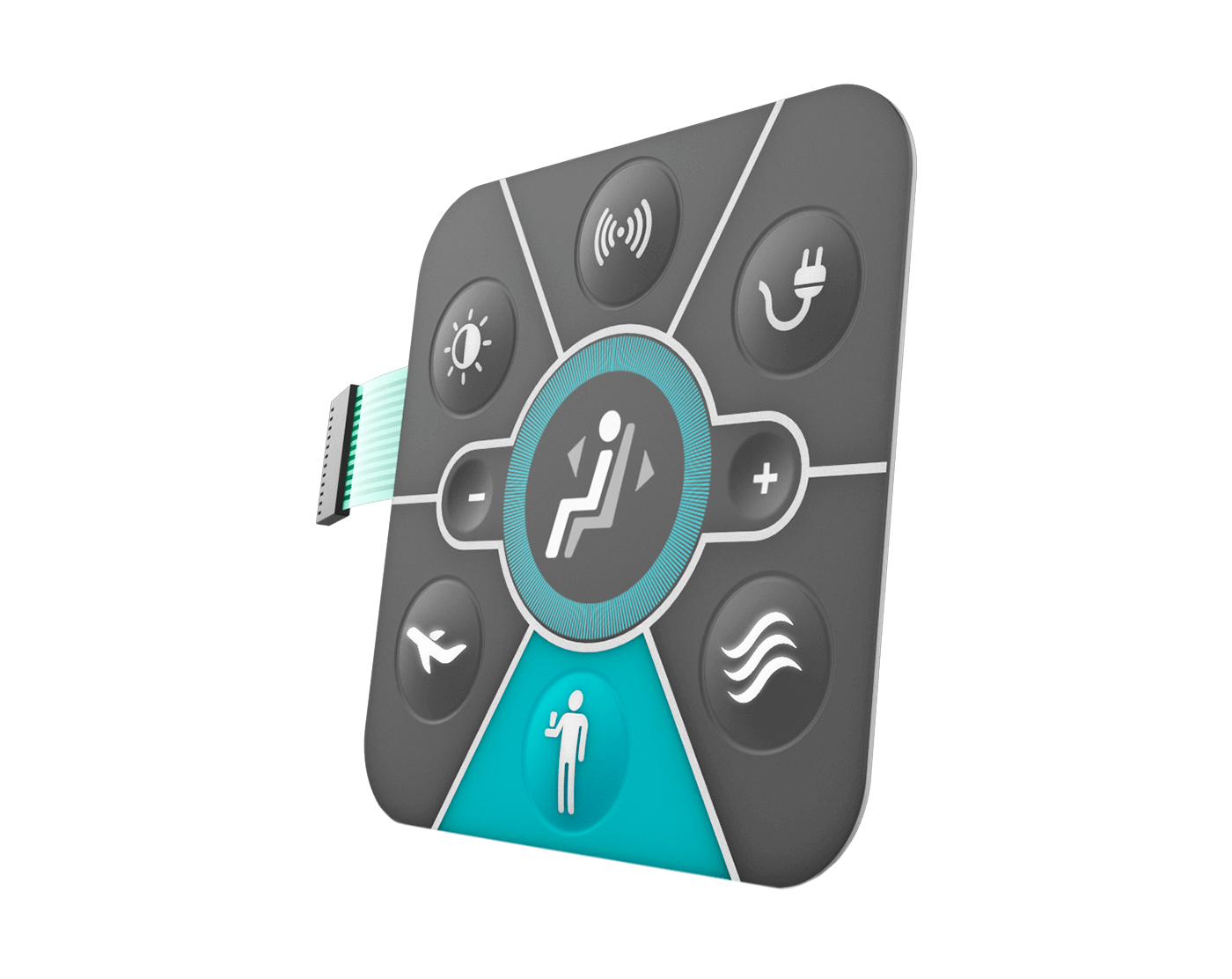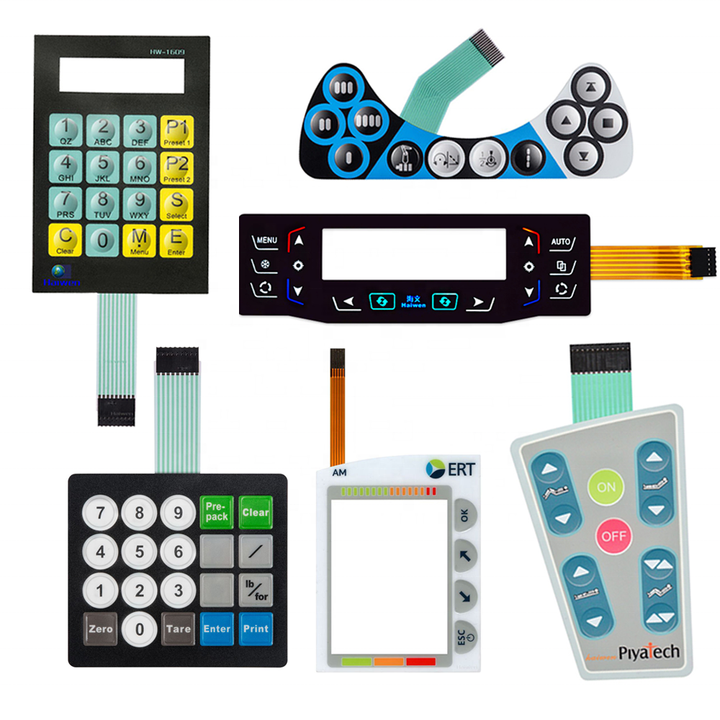A Comprehensive Guide to Membrane Switches for Product Designers
A Comprehensive Guide to Membrane Switches for Product Designers
Blog Article
Recognizing the Significance of Membrane Switches in Interface
Membrane switches are indispensable components in the style of efficient individual interfaces, promoting not just capability yet also improving visual charm and user interaction. As we check out the future fads and numerous advantages connected with Membrane modern technology, it becomes clear that these buttons are a lot more than just components; they stand for a merging of advancement and usefulness.
What Are Membrane Switches?

The spacer layer, which contains glue residential or commercial properties, enables the separation of the circuit layer from the overlay, guaranteeing that the button stays in a non-activated state up until pushed. When pressure is related to the overlay, it presses the spacer layer, linking the void and finishing the circuit in the underlying layer. This design not only decreases the physical room required for conventional mechanical switches however also improves the longevity of the tool, as Membrane switches are usually resistant to dirt, wetness, and other environmental factors.
Frequently discovered in applications ranging from customer electronic devices to medical devices, Membrane buttons are essential to contemporary technology, giving a user-friendly and effective interface that lines up with contemporary style requirements.
Benefits of Membrane Buttons
While many switch innovations exist, Membrane Switches deal distinct benefits that make them especially desirable in different applications. Among the key benefits of Membrane buttons is their compact design, which permits space-saving implementations in tools where realty is limited. Their thin account not just improves visual appeal but likewise helps with lightweight building.
Another considerable advantage is their resistance to ecological elements. Membrane buttons are normally sealed against dampness, dirt, and pollutants, making them suitable for use sought after environments, such as clinical tools and industrial equipment. This sturdiness prolongs the life-span of the button, decreasing maintenance costs and enhancing integrity.
In addition, Membrane switches can be customized to satisfy particular style demands, including distinct graphics and shades that improve customer interaction. Their tactile responses alternatives can additionally be tailored to supply a gratifying user experience. Additionally, Membrane buttons are affordable, especially in high-volume applications, as they can be produced successfully.
Applications in Various Industries

In the customer electronic devices industry, Membrane switches are prevalent in devices such as microwaves, washing devices, and push-button controls. Their tactile comments and visual options boost customer experience while offering a smooth, modern-day appearance. Additionally, automobile producers utilize Membrane buttons in dashboard controls and infotainment systems, where space is limited, and customer interaction is vital.
Furthermore, the industrial market leverages Membrane buttons in control panels for machinery and devices, permitting user-friendly operation in commonly severe environments. Their resistance to chemicals and moisture ensures long life and reliability in these applications. Overall, the versatility of Membrane Switches adds dramatically to their widespread usage, making them crucial in different technical domains.
Design Considerations for Membrane Buttons

When designing Membrane buttons, a number of key considerations should be considered to ensure ideal functionality and user experience. To start with, the choice of materials is vital; selecting long lasting, top quality substratums can improve the button's durability and resistance to ecological variables such as wetness and temperature fluctuations.
Second of all, the layout of the visuals overlay should prioritize clarity and simplicity of use. Icons and message must be clear, and the format needs to help with intuitive interaction (membrane switches). In addition, responsive responses is essential; incorporating a tactile dome or other devices can boost the customer experience by supplying physical confirmation of activation
Another essential variable is the switch's electric efficiency. Designers must make sure that the conductive traces are company website correctly made to reduce resistance and stay clear of signal interference. This includes assessing the required actuation force and guaranteeing compatibility with the electronic elements they will certainly user interface with.

Future Fads in Membrane Modern Technology
As modern technology proceeds to advance, Membrane switches are positioned to evolve significantly, driven by developments you can try these out in materials and making methods. One emerging trend is the consolidation of advanced materials, such as conductive inks and flexible substrates, which improve longevity and minimize the total weight of Membrane buttons. These materials not just enhance the tactile action but also enable the layout of buttons that can endure harsher environmental problems.
In addition, the assimilation of touch-sensitive modern technologies is transforming conventional Membrane Switches into even more interactive interface. Capacitive touch sensors embedded within Membrane switch panels can give a much more intuitive and responsive individual experience, aligning with the growing demand for smooth, modern-day styles in consumer electronic devices.
In addition, improvements in printing methods, such as electronic and 3D printing, allow fast prototyping and personalization of Membrane switches. This adaptability enables suppliers to react faster to market demands and consumer choices.
Finally, sustainability is coming to be a considerable focus, with manufacturers exploring environmentally friendly products and procedures. As these trends unravel, the future of Membrane modern technology promises enhanced capability, aesthetic allure, and environmental obligation, solidifying their duty in advanced interface throughout numerous industries.
Verdict
In verdict, Membrane Switches represent a crucial part in the design of individual interfaces, combining functionality with aesthetic adaptability. As developments in modern technology continue, the development of Membrane buttons is anticipated to more refine user interfaces, driving click reference development and improving functionality in a progressively complicated technical landscape.
Membrane switches are indispensable parts in the style of effective customer interfaces, facilitating not only performance however also boosting visual allure and customer interaction.Membrane Switches serve as an essential part in different individual interfaces, facilitating a smooth communication between users and digital tools.While countless switch technologies exist, Membrane Switches deal distinctive benefits that make them especially preferable in numerous applications.Furthermore, Membrane switches can be customized to meet certain style demands, including unique graphics and colors that improve user interaction.In final thought, Membrane Switches stand for an important part in the design of customer interfaces, integrating capability with visual flexibility.
Report this page